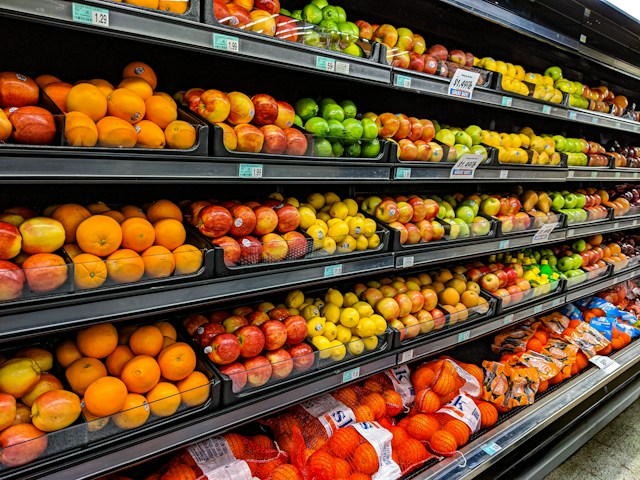As our global society becomes increasingly aware of the environmental impacts of traditional farming practices, the agriculture industry is exploring innovative methods to curb the negative effects.
Among these methodologies, the implementation of renewable energy sources on produce farms is proving to be a successful and sustainable approach.
These clean energy practices not only decrease harmful emissions significantly, but also allow farms to lessen their dependency on conventional energy sources.
The shift has considerable potential to reduce agricultural costs in the long term.
This article, therefore, aims to shed light on some of these practices.
It discusses the execution, benefits, and the wider implications of utilizing renewable energy sources within produce farming contexts.
Contents
Renewable Energy Practices For Produce Farms
1. Solar-powered irrigation systems
As we delve into renewable energy practices for produce farms, one aspect that proves itself undeniably beneficial is the use of solar-powered irrigation systems.
Irrigation forms a crucial part in the successful management of every produce farm, and it often requires an extensive amount of energy.
Traditional irrigation systems depend on fossil fuels, making them expensive and harmful to the environment.
This is where solar-powered irrigation systems come into play, offering a sustainable, cost-effective and environmentally friendly solution.
The primary function of these systems is to draw water from the source and distribute it evenly throughout the fields.
With the use of solar panels, these systems can convert the abundant sunlight into electricity required for the operation of water pumps.
Importantly, these solar panels do not emit any harmful greenhouse gases, ensuring sustainable farming while not compromising our environment.
Besides being eco-friendly, solar-powered irrigation systems are perceived as a long-term investment as they require minimal maintenance.
Operating independently of the grid, they are also a practical solution for farms located in remote areas with less access to traditional energy sources.
The design and installation of these systems can be customized based on the size of the farm, geographical location and crop requirements.
Moreover, with advancements in solar technology, these systems are increasingly becoming more efficient and reliable.
Many farms around the world have already incorporated solar-powered irrigation systems and are reaping the benefits of cost savings and increased crop yield.
Various grants and incentives are also provided by governments to encourage the adoption of these sustainable farming practices.
However, it’s necessary for the farm owners to consider the investment cost, equipment and installation process before implementing these systems on a large scale.
Overall, implementing solar-powered irrigation systems on produce farms is a giant leap in ensuring a sustainable and renewable future in farming.
Gaining more understanding of the benefits of these systems will undeniably instigate many more farmers worldwide to become a part of this green revolution.
2. Wind Energy for Onsite Operations
When exploring the potential of wind energy for onsite operations on produce farms, it is vital to understand the basic mechanisms.
Modern wind turbines use the wind’s kinetic energy to generate electricity.
Once the wind turns the turbine blades, the energy is transferred from the rotor to the generator, where it is converted into electrical energy.
Onsite wind energy systems offer farm owners the opportunity to generate their own energy, reducing commercial electrical consumption.
Moreover, wind energy is a renewable source of power that reduces greenhouse gas emissions, aligning farming practices with sustainability principles.
The energy produced by the wind turbines can power different onsite operations such as irrigation systems, machinery, storage facilities, and heating systems.
Before implementing wind energy solutions, it is imperative to assess the wind potential of the farm’s location.
Sufficient wind speed is crucial for turbine feasibility as it directly impacts the amount of energy that can be generated.
Professional weather stations or local anemometers can be used to evaluate the site-specific wind speed and direction.
Many farmers find it beneficial to contract with a service provider to conduct a wind resource assessment for the most precise results.
Farmers and landowners also have the potential to generate additional revenue by leasing their land to wind energy companies and receiving rent payments.
An increasing number of grants and incentives are available to support the integration of wind energy into farming practices at both the federal and state levels.
However, it is necessary to take into account investment costs, which include site evaluation, turbine purchase and installation, and ongoing maintenance and repairs.
Overall, wind energy serves as a feasible and sustainable option for reelable energy practice in produce farms.
It is a valuable tool that can equip farmers with the independence and stability of a self-sustaining energy source while significantly reducing their environmental impact.
3. Biomass Energy from Farm Waste
The agricultural sector, specifically produce farms, harbors an abundance of potential energy resources, particularly in the form of biomass energy derived from farm waste.
Put simply, biomass energy involves the conversion of organic waste materials into energy.
This process represents an incredible opportunity for produce farms to generate their own energy, minimize waste, and reduce dependence on non-renewable energy sources.
Farm waste that can be utilized for biomass energy production varies greatly, and includes residues from crops, manure, and post-harvest waste.
One of the great advantages is that the production and utilization of biomass energy can render farms essentially self-sufficient in terms of energy needs.
Biomass energy can also offer an economical solution, as the waste that farms already produce can be used to generate energy, therefore reducing operational costs in the long run.
Not only that, but it turns a potential waste problem into an asset.
The process of biomass energy production involves the combustion, gasification, or anaerobic digestion of waste materials.
The combustion process involves burning the waste at high temperatures, which then produces steam that can be used to generate electricity.
Gasification, on the other hand, involves heating the waste under high pressures and in the absence of oxygen to produce syngas – a combination of hydrogen and carbon monoxide.
Syngas can then be used for a variety of purposes, such as the production of heat, electricity, or even fuels.
The third method, anaerobic digestion, involves the breakdown of waste by bacteria in an oxygen-free environment.
This process produces biogas and can be a particularly effective method for livestock farms that produce a lot of manure.
Regardless of the method used, the end result is the production of renewable energy from resources that would otherwise be wasted.
While the initial investment required to set up biomass energy systems can be high, the long-term benefits often outweigh the costs.
Moreover, several grants and incentives are available to assist farms with the initial setup costs.
This multifaceted approach to renewable energy, incorporating biomass production, has the potential to significantly reduce a farm’s carbon footprint and contribute to a sustainable future.
4. Hydroelectric Power for Machinery
Renewable energy practices on produce farms include the ingenious use of hydroelectric power specifically for the operation of machinery.
This is an innovative practice that leverages the availability of water resources on farms and converts it into a source of sustainable energy.
Hydroelectric power is a viable option for farms located near rivers or aquifers, or those with significant water storage facilities.
The use of hydroelectric power can effectively minimize the use of conventional fuel-based machinery and thereby contribute to the overall sustainability of agricultural practices.
The creation of micro or small hydroelectric power systems requires less capital investment as compared to mega hydroelectric projects.
In these systems, water from a river or stream is channeled through a pipe and turbine setup, wherein the flow and fall of water spins the turbines, thus generating electricity.
This electricity is then stored in batteries and used to power agricultural machinery such as tractors, harvesters, and irrigation pumps.
Besides, the surplus power generated can also be supplied back to the local grid, thereby making the farm a source of renewable energy itself.
Also, the conversion efficiency of hydroelectric power systems is comparatively higher than solar and wind energy systems.
Farm-specific hydroelectric systems minimize the energy loss due to transmission, as everything is located within the farm limits.
This translates to more effective utilization of resources, increased efficiency, and an overall reduction in the carbon footprint of the farm.
However, the success of this system largely depends on the availability of water resources and the design and installation of the setup.
Hence, it is essential for farmers to conduct a thorough feasibility study and engage in the professional installation of the system to ensure its optimum performance.
Though it requires an initial investment, the long-term benefits of hydroelectric-powered machinery in terms of cost-saving and conservation of the environment make it an encouraging move towards more sustainable farming.
With adequate support from government bodies and relevant stakeholders, the adoption of such systems could become more widespread, making farms more self-sufficient and energy-efficient.
5. Geothermal Energy for Heating Greenhouses
Understanding the potential and effectiveness of geothermal energy in heating greenhouses is key to sustainably maximizing the yields from produce farms.
The use of geothermal energy in farming operations, particularly for the purpose of heating greenhouses, is an emerging trend in the world of renewable energy.
With the planet’s core temperature being a constant and inexhaustible source of heat, geothermal energy presents an opportunity to create consistently ideal conditions for plant growth regardless of outdoor weather circumstances.
This practice helps to reduce dependence on traditional, non-renewable energy sources such as diesel, natural gas and electricity, leading to a marked reduction in greenhouse gas emissions from farming operations.
This form of renewable energy works by harnessing the heat from the Earth’s interior through wells that are drilled deep into the ground and transferring this heat to the greenhouse through a heat pump.
Utilizing geothermal energy for heating greenhouses not only promotes energy efficiency, but also has the potential to substantially cut operational costs for the farmer.
The effectiveness of geothermal energy in heating greenhouses is not only theoretical but has been proven in practice as well.
Many agricultural firms and farmers globally are now adopting geothermal greenhouse heating systems and are witnessing significant improvements in their produce quality, productivity, and profit margins.
The reliability and sustainability of geothermal energy make it a perfect solution for the limitations in traditional farming practices.
However, it is worth noting that the initial installation costs for geothermal greenhouse heating systems can be quite high.
Despite this, the long-term savings on energy costs, coupled with increased produce yields, make the investment worthwhile for many produce farmers.
Another benefit of using geothermal energy for heating greenhouses is the ability to control temperature to a relatively higher degree of precision.
This ensures optimal growth conditions for the plants, thereby resulting in a more consistent and abundant harvest.
While other renewable energy sources such as solar power or wind energy also play a vital role in sustainable farming practices, the use of geothermal energy specifically for heating greenhouses is a popular and growing trend in the realm of agri-tech.
Overall, geothermal energy stands tall as a promising tool for realizing sustainable and efficient agricultural practices in the 21st century.
The Bottom Line
Harnessing the power of renewable energy sources presents a fascinating and sustainable future for agriculture.
Implementing solar-powered irrigation systems can notably optimize water use, while utilizing wind energy can efficiently fuel onsite operations.
Similarly, converting farm waste into biomass energy not only addresses waste disposal concerns but also generates considerable power.
Hydroelectric power offers another viable alternative for running heavy machinery.
Lastly, the integration of geothermal energy in greenhouses can ensure optimal year-round temperatures, promoting growth even in colder seasons.
Embracing these innovative solutions will significantly boost agricultural productivity, contributing to food security and environmental sustainability simultaneously.




